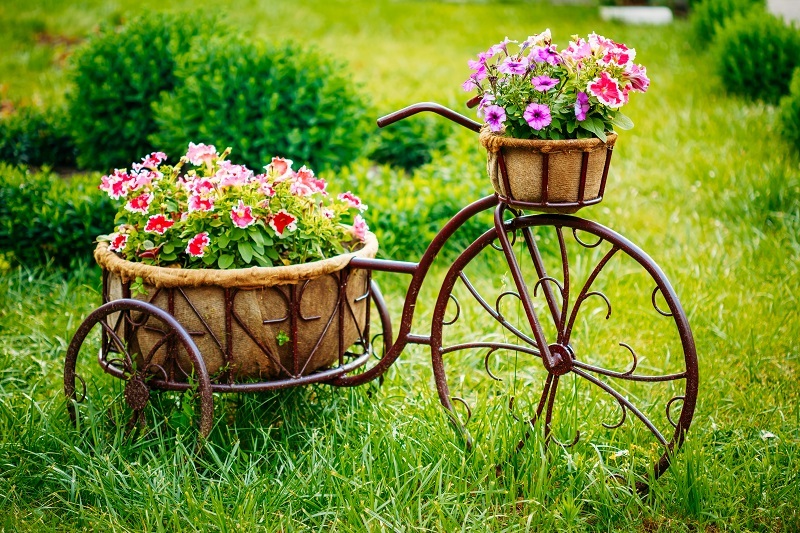Unlock the Secrets of Orchid Care
Posted on 14/06/2025
Unlock the Secrets of Orchid Care: The Ultimate Guide for Thriving Blooms
Orchids are renowned not only for their extraordinary beauty but also for their mystique and reputation for being "difficult." However, many gardening enthusiasts are surprised to discover that successful orchid care is within everyone's reach. With the right guidance, you, too, can enjoy these dazzling blooms for years to come. This comprehensive article will help you unlock the secrets of orchid care, offering practical tips, advice, and insights suited for both beginners and seasoned horticulturists.

Why Grow Orchids? The Allure of Exotic Blooms
Orchids, belonging to the family Orchidaceae, offer unmatched floral diversity. With over 25,000 species and more than 100,000 hybrids, there's a perfect orchid for every grower. Their unique shapes, vivid colors, and charming fragrances make them highly sought after. Below are just a few reasons why orchid cultivation is rewarding:
- Aesthetic value: Orchids brighten homes and offices with their exotic beauty.
- Longevity: Properly cared-for orchids can live for decades.
- Air quality: Like many houseplants, orchids can help improve indoor air.
- Diversity: There are countless orchid varieties to explore.
- Challenge and satisfaction: Many find caring for orchids both relaxing and mentally stimulating.
Understanding Orchids: The Basics
Unlocking the secrets of orchid care begins with understanding their basic needs and characteristics. They are native to nearly every continent and can thrive in a variety of environments, from tropical rainforests to arid deserts. However, most popular houseplant orchids, like Phalaenopsis (Moth Orchid), Cattleya, Dendrobium, and Oncidium, have similar care requirements.
The Anatomy of Orchids
Orchids possess several unique features that set them apart from other houseplants:
- Pseudobulbs: Thickened stems that store water and nutrients (not present in all orchids).
- Aerial roots: Silver-green roots that absorb moisture and nutrients from the air.
- Labellum: Modified petal, also known as the "lip," which often serves to attract pollinators.
- Leaves: Adapted for efficient water storage and minimizing loss.
Common Types of Orchids for Indoor Growing
- Phalaenopsis (Moth Orchid): User-friendly, ideal for beginners; flowers can last for months.
- Cattleya: The "queen of orchids"; known for large, fragrant blooms.
- Dendrobium: Diverse genus; offers both compact and larger varieties.
- Oncidium (Dancing Lady): Flourishes with ample light; blooms with bright yellow flowers.
Unlocking the Secrets of Orchid Care: Essential Considerations
To foster radiant, healthy orchids, focus on these six fundamental aspects:
1. Light Requirements
Orchids need sufficient light to thrive, but direct sunlight can scorch their delicate leaves. The balance is crucial:
- Moth Orchids (Phalaenopsis): Prefer bright, indirect light. East- or west-facing windows are ideal.
- Cattleyas and Oncidiums: Need a bit more light but still shielded from midday sun.
- Dendrobiums: Enjoy a few hours of filtered direct sunlight daily.
Leaf color is a helpful indicator; healthy green with a slight yellow tint signals the right light level. If leaves are very dark green, your orchid may require more light.
2. Watering Orchids the Right Way
Improper watering is a common cause of orchid troubles. Unlike typical houseplants, orchids are prone to root rot if kept too wet. Here's what you need to know:
- Let media dry out: Allow the growing medium to dry slightly before watering again.
- Water early: Water orchids in the morning, so leaves and roots have time to dry by evening.
- Avoid soggy roots: Ensure excess water can drain freely from the pot.
Pro Tip: Insert a finger about an inch into the potting mix; if it feels dry, it's time to water. Alternatively, use wooden skewers or chopsticks--if they come out clean and dry, give your orchid a drink.
3. Humidity: Creating a Moist Environment
Orchids flourish with higher humidity levels than typical indoor environments provide. Aim for 50%-70% humidity, especially during dry winter months. Techniques to increase humidity include:
- Using a humidity tray with pebbles and water (don't let the pot sit directly in water).
- Grouping plants together to create a microclimate.
- Placing a small humidifier nearby.
4. Temperature Preferences
Most popular orchids do well in household temperatures. Here are general guidelines:
- Day: 65-80?F (18-27?C)
- Night: 55-65?F (13-18?C)
Nighttime temperature drops encourage healthy blooms. Avoid placing orchids near drafts or heating/cooling vents, as temperature fluctuations can stress your plant.
5. Feeding: Orchid Fertilization
Unlocking the secret to lush orchid growth requires prudent fertilization. Use a balanced fertilizer (20-20-20) formulated for orchids. Important tips:
- Feed weakly, weekly--dilute the fertilizer to half or quarter strength.
- Flush the potting media with clean water occasionally to prevent salt buildup.
- During the winter or dormant season, reduce feeding frequency.
6. Repotting Orchids
Repot orchids every 1-2 years, or when the media breaks down. Signs it's time to repot include roots growing out of the pot, declining plant health, and poor drainage. When repotting:
- Remove old media and trim dead roots.
- Select a slightly larger pot with ample drainage holes.
- Use a high-quality orchid mix--ingredients like bark, charcoal, and perlite work well.
Advanced Orchid Care Tips for Gorgeous Blooms
Once you've mastered the basics, take your orchid care to the next level with these advanced strategies:
Promoting Reblooming
- After flowers drop, cut the spike above a node (the "joint" on the flower stem) to encourage a secondary bloom for some orchids.
- Provide a night temperature drop; this can trigger bud formation in many species.
- Resume normal care, maintaining patience as reblooming can take several months.
Pest and Disease Management
Orchids can sometimes fall prey to pests like mealybugs, spider mites, and scale insects. The best defense is vigilance and sterile growing conditions:
- Inspect leaves and roots regularly for signs of pests.
- Use a gentle, orchid-safe insecticidal soap if infestations occur.
- Always use sterilized scissors or tools to avoid spreading disease.
Orchid Propagation
Unlocking the secrets of orchid propagation can increase the enjoyment of orchid growing:
- Dividing mature plants: Some orchids form clumps that can be separated during repotting.
- Keikis: Tiny plantlets that grow on flower spikes (especially common with Phalaenopsis and Dendrobium). Once roots develop, these can be removed and potted separately.
Frequently Asked Questions: Orchid Care Demystified
Why are my orchid's leaves turning yellow?
Yellowing leaves can result from overwatering, too much direct sunlight, or natural leaf aging. Assess your care routine and adjust accordingly.
Why are my orchid's roots white or silvery?
Healthy aerial roots often appear silver or white; this is a sign of a happy orchid. If roots are mushy or black, cut away any decayed parts and repot if necessary.
Why isn't my orchid blooming?
Orchids need proper lighting, temperature shifts, and occasional rest to rebloom. Patience and slightly cooler nighttime temperatures can encourage bud development.
Can I grow orchids outdoors?
Certain orchids do enjoy outdoor summers (in shaded areas, not direct midday sun) but should be brought inside before temperatures drop below 55?F (13?C).
Best Orchid Varieties for Beginners
If you're new to orchid growing, start with these forgiving varieties:
- Phalaenopsis (Moth Orchid): Beautiful, abundant flowers.
- Dendrobium: Hardy and resilient.
- Cattleya: With routine care, these thrive indoors.
Start with one or two easy orchids to hone your skills and build confidence!
Common Mistakes to Avoid in Orchid Care
Even experienced growers sometimes stumble. Here are the top mistakes to avoid when unlocking the secrets of orchid care:
- Overwatering: More orchids die from too much water than too little.
- Insufficient light: Without proper light, orchids may not bloom.
- Neglecting humidity: Low humidity can stress your orchid and hinder growth.
- Ineffective potting media: Regular soil is too dense--always use dedicated orchid mix.
- Improper feeding: Over-fertilizing can burn roots; less is more.
Essential Tools for Caring for Orchids
The right tools make a significant difference in orchid care:
- Sharp, sterilized scissors for trimming roots and stems
- Clear plastic pots for monitoring root health
- Specialized orchid fertilizer
- Humidifier or humidity trays
- Orchid bark or specialized potting mix

Where to Find High-Quality Orchids
Consider reputable garden centers, specialized nurseries, orchid societies, and trustworthy online retailers. Many local clubs host regular sales and offer advice, support, and camaraderie for enthusiasts.
Tip: Start with healthy, pest-free plants to ensure success from the beginning.
Final Thoughts: Grow Your Orchid Knowledge & Joy
Unlocking the secrets of orchid care transforms these enchanting plants from elusive mysteries into joyful, lifelong companions. Whether you're nurturing your first Phalaenopsis, expanding into rare hybrids, or cultivating prize-winning specimens, success is rooted in attentive observation, patience, and ongoing learning.
- Invest in quality plants and supplies.
- Monitor and adjust to your orchid's individual needs.
- Engage with orchid communities for support and inspiration.
- Celebrate every bloom and milestone!
With each new leaf or graceful flower spike, you'll deepen your appreciation for these fascinating wonders of the plant world. Happy growing--and may your orchids thrive!
Latest Posts
Unveil the beauty of your hydrangeas with proper care
Explore 7 Hidden Secrets of Tulips
What Your Birth Flower Can Tell About Your Inner Self





